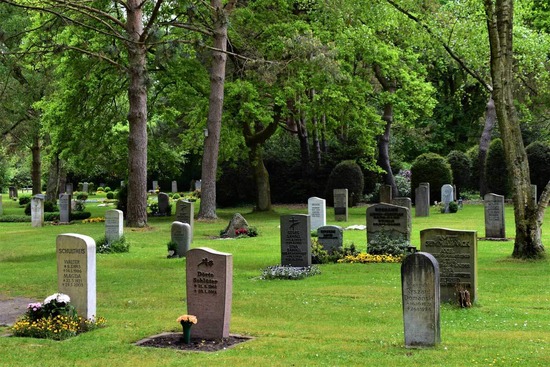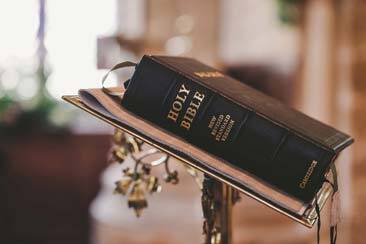The sanctuary was a building at the center of ancient Israelite society that gives us a small picture of the original sanctuary, God’s throne room in heaven (Hebrews 8:1-2).
God instructed the Israelites to build the sanctuary because He wanted them to understand the plan of salvation from start to finish. It shows us how He will bring an end to sin.
This teaching especially intrigued early Advent believers.
Even before the start of the Seventh-day Adventist Church, they discovered this doctrine as God guided their earnest Bible study. They realized that the sanctuary teaching connects Scripture and helps us understand events before Jesus’ coming.
So, let’s break down this doctrine and understand how it came about. We’ll cover:
- What is the sanctuary?
- What is the sanctuary doctrine, and how did it develop in Adventism?
- Is the sanctuary doctrine unique to Adventism?
- How is the sanctuary doctrine relevant today?
But first, here’s a quick review of the sanctuary itself.
What is the sanctuary?
The sanctuary, as described in Scripture, is God’s dwelling place in heaven (Exodus 15:17). There, Jesus Christ intercedes on our behalf before God’s throne (Hebrews 7:25; 8:1-2).
Often, though, when we think of the sanctuary, we first think of the earthly structure God told the ancient Israelites to build (Exodus 25:8). However, this structure was really just patterned after the true sanctuary in heaven (Exodus 25:9; Hebrews 8:5).
Bible scholars use the term type to refer to the ancient Israelite sanctuary. The type is like a small replica of the ultimate fulfillment, which is referred to as the antitype.
A classic example of types and antitypes is Adam and Jesus. Adam, called God’s “son,” is the type. By choosing to disobey God in the Garden of Eden, he failed and brought sin into the world. But Jesus, the Son of God, became the antitype that redeemed Adam’s failure (Romans 5:12-15).
Similarly, the Old Testament sanctuary is a type of another sanctuary—the one in heaven. Hebrews 8:2 refers to it as the “true tabernacle which the Lord erected, and not man” (NKJV). After Jesus died and rose to life, He returned to heaven and the heavenly sanctuary. There, He performs His high priestly ministry on our behalf, representing us to God the Father (1 Timothy 2:5).
The Old Testament spends a significant portion explaining the earthly sanctuary and its services to help us understand this heavenly sanctuary and the plan of salvation.
A brief overview of the ancient Israelite sanctuary
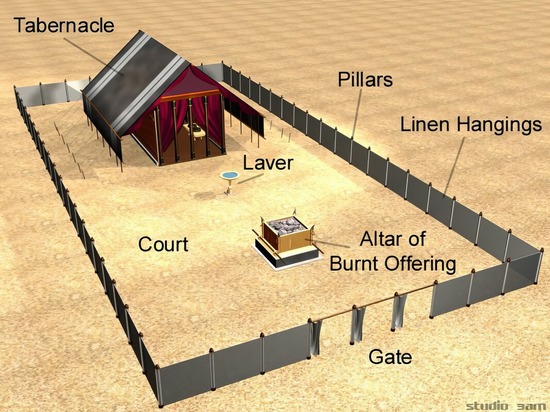
God directed Moses and the people of Israel to build a sanctuary in the wilderness—which became the basis for Solomon’s magnificent temple in Jerusalem (1 Kings 5-7). God had a couple of purposes in mind with this object lesson.
First and foremost, He wanted to be close to His people (Exodus 25:8). Sin separates us from God, but the sanctuary symbolizes how He removes that separation to be with us.
Second, He wanted to illustrate the plan of salvation.
The Israelites were spiritually young and would learn better through things they could see. They wouldn’t understand complex, abstract concepts. So, God brought salvation to them in their language—the sanctuary.
The sanctuary had three different sections to it: the courtyard, the Holy Place, and the Most Holy Place.
In the courtyard, priests sacrificed lambs upon the altar of burnt offering to symbolize the forgiveness of sins. They would wash themselves in a basin before entering the Holy Place (the first section of the sanctuary).
The Holy Place contained a table of bread, a lampstand, and an altar of incense, where the priests performed other ceremonies.
The Most Holy Place contained one article of furniture, called the Ark of the Covenant. It held the Ten Commandments, a pot of manna, and Aaron’s rod that budded. This section of the sanctuary, though, was reserved for the high priest, who only entered there once a year—during a feast called the Day of Atonement. On this day, the high priest made a special sacrifice on behalf of all the Israelites.
Why?
All through the year, the priests performed the daily sacrifices that represented Jesus’ sacrifice for us as the Lamb of God (Hebrews 9:6-7; John 1:29). They took the blood of the animal sacrifices, carried it into the Holy Place of the sanctuary, and sprinkled it there (Leviticus 4:35). Sometimes, they also roasted the sacrifice and ate it to symbolize the way Jesus carried our sins in His body (Leviticus 10:17-18; Hebrews 9:28).
The result was a sanctuary full of sin.
It needed to be cleansed, and this was the purpose of the Day of Atonement. Here’s how Leviticus describes it:
“Atonement will be made for you on this day to cleanse you, and you will be clean from all your sins before the Lord…. The priest who is anointed and ordained to serve as high priest in place of his father will make atonement. He will put on the linen garments, the holy garments, and make atonement for the most holy place. He will make atonement for the tent of meeting and the altar and will make atonement for the priests and all the people of the assembly. This is to be a permanent statute for you, to make atonement for the Israelites once a year because of all their sins” (Leviticus 16:30, 32-34, CSB).
The high priest would carry the blood of a special sacrifice into the Most Holy Place and sprinkle the blood there. When he finished the ritual, the sanctuary and God’s people were symbolically clean of all sin.
Adventists believe that this Old Testament feast is a type of a judgment that will take place before Jesus returns. That judgment will result in a complete cleansing of the heavenly sanctuary so that Jesus can return and bring His followers to heaven.
Let’s take a closer look at how these teachings developed in the Adventist Church.
What is the sanctuary doctrine, and how did it develop in Adventism?
The doctrine of the sanctuary describes how the earthly sanctuary mirrors the heavenly one within the plan of salvation. It helps us understand the judgment that occurs before Jesus returns, known as the Investigative Judgment. This doctrine is foundational to the theology of the Seventh-day Adventist Church, so much so that it’s one of our fundamental beliefs.1
To understand how it all started, we’re going to take a trip back to 1844—a time when sincere Christians from many different denominations thought Jesus would return on October 22nd.
Millerites and the cleansing of the sanctuary
The sanctuary doctrine has its roots in the aftermath of the Great Disappointment of 1844. The Millerites, followers of William Miller, had concluded Jesus would return on October 22 of that year. Their conclusions came from Daniel 8:14, which says “the sanctuary shall be cleansed” after a prophetic time period.
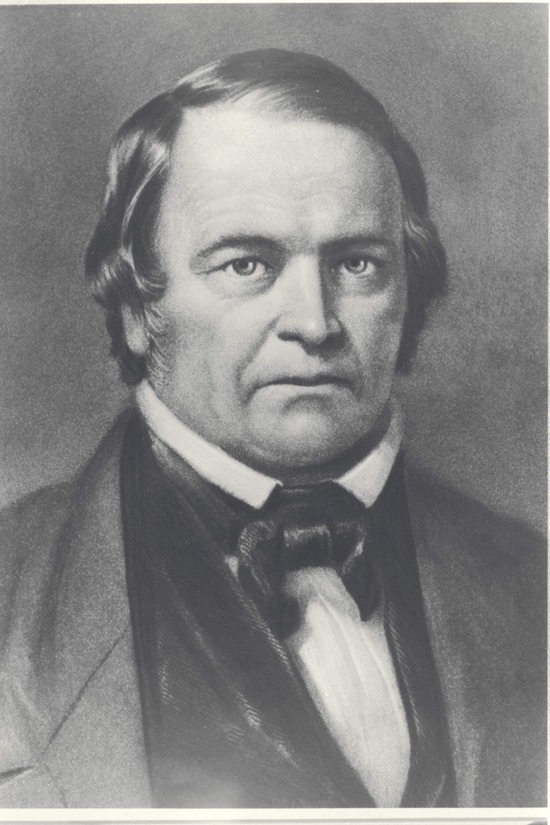
“Courtesy of the Ellen G. White Estate, Inc.”
The Millerites, based on popular Christian interpretations of their time, had assumed that the sanctuary refers to the earth and that it would be cleansed by fire when Jesus returned.2
They were bitterly disappointed when He didn’t come.
Some of them went back to the Bible to find out where they’d gotten it wrong. Two of those people were Hiram Edson and his friend, Owen R. L. Crosier. They had been perplexed and disheartened when Jesus didn’t return on October 22nd, but they’d determined not to give up. One day not long after the Disappointment, they set out to visit some friends and encourage them in the faith. As Edson was walking through a field, he suddenly stopped.
Right there, the Holy Spirit impressed him that the cleansing of the sanctuary in Daniel 8:14 was not about Jesus coming to the earth. Instead, Jesus had entered the Most Holy Place of the sanctuary in 1844.3
Encouraged by this, Edson, Crosier, and another friend, Dr. F. B. Hahn, dove into the Bible to study the subject of the sanctuary. They confirmed that 1844 was a special date—just not the date of Jesus’ second advent.
It was the end of one thing and the beginning of another.
The key lay in the interpretation of sanctuary in Daniel 8.
Studying to understand the Great Disappointment
When early Adventists realized that Daniel 8:14 wasn’t referring to Jesus’ coming, they decided to study what “the cleansing of the sanctuary” really meant.
As we pointed out, the Millerites had thought the sanctuary referred to the earth. And by interpreting the sanctuary as the earth, the only logical explanation for that phrase was Jesus’ return. He’d come back, take His followers to heaven, and cleanse the earth with fire.
After the Great Disappointment, though, Edson and Crosier reviewed these verses and others. What they learned changed their thinking.
The sanctuary, as we already saw, is a type of the one in heaven. The cleansing of the sanctuary in Daniel’s vision refers to the cleansing of the heavenly temple.
Just as the priests in ancient Israel symbolically brought the people’s sins into the sanctuary throughout the year, the heavenly sanctuary contains the record of sins forgiven by Jesus’ death on the cross (Jeremiah 17:1; Malachi 3:16; Revelation 20:12).
Here’s how the apostle Paul describes it in the New Testament:
“According to the law almost everything is purified with blood, and without the shedding of blood there is no forgiveness. Therefore, it was necessary for the copies of the things in the heavens to be purified with these sacrifices, but the heavenly things themselves to be purified with better sacrifices than these [animal sacrifices]” (Hebrews 9:22–23, CSB).
Jesus, our great High Priest, opens the records of human history and looks over the life of each person. He looks at their heart’s intent—not just their actions—and judges whether they truly believed and accepted Him.
This judgment, what we call the Investigative Judgment, began in 1844. And it’s still continuing today.
We can’t see it or feel it, but in heaven, Jesus is performing this work (Daniel 7:9-10, 13-14). And thankfully, this judgment doesn’t have to create fear in our hearts because Jesus is our intercessor whose blood covers our sins (1 John 2:1; Hebrews 10:10-14).
Learn why we believe this judgment began in 1844.
What Adventists did with these discoveries
The sanctuary doctrine was important to Adventists because it helped them understand why Jesus hadn’t returned in 1844, and it expanded their understanding of God’s plan to end sin. It showed them that we are living in the time of judgment before Jesus returns.
When the early Advent believers came to these conclusions, Crosier and another Adventist began publishing their findings. They wanted to inform and encourage other Advent believers who were struggling with what happened at the Great Disappointment.
More early Adventist leaders, such as Joseph Bates, studied these ideas on their own and came to the same conclusions.4
Adventists began to see how the sanctuary pointed to God’s beautiful plan of salvation and connected many teachings in the Bible, such as the crucifixion, Christ’s ministry in the sanctuary, the Second Coming, the judgment, and the Ten Commandments (which are contained inside the Ark of the Covenant).
But is the Adventist Church the only one that teaches the sanctuary doctrine?
Is the sanctuary doctrine unique to Adventism?
The ancient Israelite sanctuary is familiar to many Christian denominations, though the specific sanctuary doctrine we’ve explained here is unique to Adventism. The doctrine stems from the Bible studies of early Adventists as they earnestly sought to understand the Great Disappointment. As God blessed and guided their study, they began to put the pieces together, and it eventually became one of our fundamental beliefs.
Later, Ellen White—a young woman whom Adventists believe had the gift of prophecy—received insights from God that helped confirm what the Advent believers had found in the Bible.
One of the visions coincided with what Edson and Crosier had discovered: that Jesus moved from the Holy Place to the Most Holy Place in 1844.5 In another vision in 1847, she saw more detail of the sanctuary in heaven.6
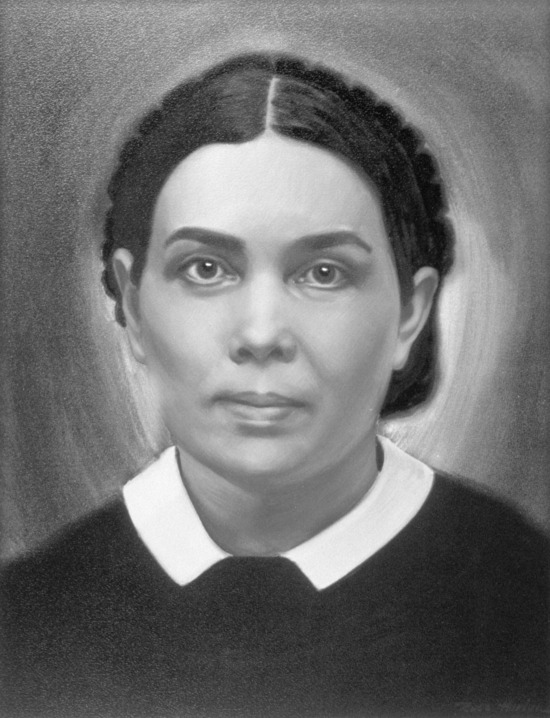
“Courtesy of the Ellen G. White Estate, Inc.”
She wrote about this incredible vision:
“After viewing the glory of the holy, Jesus raised the second veil and I passed into the holy of holies. In the holiest I saw an ark; on the top and sides of it was purest gold. On each end of the ark was a lovely cherub, with its wings spread out over it…. Jesus stood by the ark, and as the saints’ prayers came up to Him, the incense in the censer would smoke, and He would offer up their prayers with the smoke of the incense to His Father.”7
This vision put together the pieces of her other visions about the sanctuary. And though it never replaced earnest Bible study, it also reassured the Adventists that they had, indeed, come to the right conclusions in their study.
As we’ve seen, the sanctuary doctrine was incredibly relevant to Adventists as they sought to unravel the Great Disappointment. But does it have anything to do with us today?
How is the sanctuary doctrine relevant to Christians today?
The sanctuary on earth wasn’t only a lesson book for the ancient Israelites. It still helps us understand God’s plan to save us from sin and shows us what Jesus is doing for us—today!
As we’ve seen, the sanctuary is entwined with Bible prophecy, showing us that Jesus is in heaven as our intercessor right now, helping us and strengthening us. He’s also doing a special work of cleansing the records there so that He can return soon and end sin, evil, and suffering.
That means that the sanctuary shows us where we are in the timeline of end-time events. We’re not far from the Second Coming!
Above all, the sanctuary encourages us that God wants to be with us and is doing everything possible to make that happen—through the sacrifice of Jesus and His work of intercession and judgment.
He is bridging the gap that sin created between us and Him. That way, we can live with Him forever in a world of peace and joy.
Related Articles
- “What Adventists Believe About Christ’s Ministry In The Heavenly Sanctuary,” Seventh-day Adventist Church. [↵]
- Holbrook, Frank B., Doctrine of the Sanctuary: A Historical Survey, p. 9. [↵]
- “The Advent Movement Beyond the Great Disappointment,” Lineage. [↵]
- Ibid. [↵]
- White, Ellen, Early Writings, p. 54-56. [↵]
- Coon, Roger W., The Great Visions of Ellen G. White, p. 41. [↵]
- White, Ellen, Early Writings, p. 32. [↵]
More Answers
What Adventists Believe about The Experience of Salvation?
The Seventh-day Adventist Church believes that salvation is a gift that anyone can receive through faith in Jesus Christ, the Son of God. When we accept His sacrificial death in our place, He saves us from the penalty and power of sin (or evil), which prevents us from experiencing true freedom.
What do Seventh-day Adventists Believe about the Life, Death, and Resurrection of Jesus?
Jesus Christ, a person who lived in first-century Palestine, is the foundation of the Adventist faith. This is because it’s only through the life, death, and resurrection of Jesus that any of us have hope of life beyond the toil, suffering, and death of this world.
What do Seventh-day Adventists Believe about The Great Controversy?
The “Great Controversy” is the phrase Seventh-day Adventists typically use to describe the cosmic spiritual conflict between the forces of good (God) and the forces of evil or sin (Satan/the devil).
What do Seventh-day Adventists Believe about Creation?
Seventh-day Adventists believe that God is the creator of our world. They come to this conclusion from the first book of the Bible—Genesis. The account there tells us that God took six literal days to form the earth and all it contains, including us humans.
What Do Seventh-day Adventists Believe about the Father?
Like most Protestant Christians, Seventh-day Adventists believe in God the Father as part of the Godhead. We call Him Father because of His role towards Jesus. Jesus Himself encouraged us to also call Him Father.
What do Seventh-day Adventists Believe about Sin and the Nature of Humanity?
Seventh-day Adventists believe that humanity was created perfect and that, at our very core, we crave this kind of perfection and unity with God. But unfortunately, the Bible teaches that we chose to be wise in our own eyes and disobey God, which led to a natural tendency to be sinful, evil, and selfish.
What Do Seventh-Day Adventists Believe about God the Holy Spirit?
Besides believing in the full divinity of God the Father and God the Son, Adventists also believe in the full divinity of God the Holy Spirit. This post will go over what the Bible says about the Holy Spirit. You’ll learn:
What Do Seventh-day Adventists Believe about God the Son?
Seventh-day Adventists believe that Jesus is fully God, being one of the members of the Trinity. And that He plays a central role in it as the Son of God.
What Seventh-day Adventists Believe about the Trinity
How can Father, Son, and Holy Spirit all be one God? Find out as you learn what the Bible has to say about the Trinity.
What Seventh-day Adventists Believe about the Bible
The Bible forms the foundation for all that Seventh-day Adventists believe and teach. It reveals God to us and is our final authority on all issues relating to morals, doctrine, salvation, and the very nature and purpose of life itself (Isaiah 8:20).
Didn’t find your answer? Ask us!
We understand your concern of having questions but not knowing who to ask—we’ve felt it ourselves. When you’re ready to learn more about Adventists, send us a question! We know a thing or two about Adventists.


